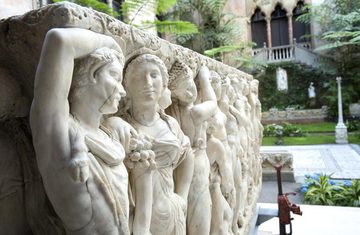By Andrea Shea. From wbur.org. Posted on 6/14/18.

“It was likely quarried in western Turkey,” senior objects conservator Holly Salmon explained, steps away from the marble hunk of history. “It ends up in Rome. It goes into a tomb hundreds of years later.”
Salmon and her colleague Jessica Chloros have been cleaning, restoring and analyzing the Roman-sculpted sarcophagus — which in Latin means "flesh eater" — for months. And they’re learning a ton.
“This piece continues to surprise us,” Chloros said. The conservators discovered traces of a rare pigment known as "Egyptian blue" on its surface.

 RSS Feed
RSS Feed